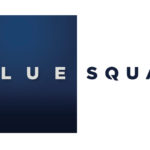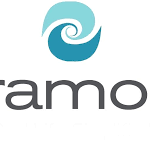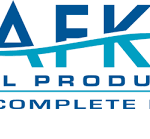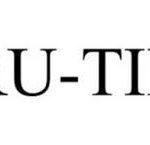Water Balance
This calculator tells you how much of which chemical is needed in order to balance your water. Enter your test results from your favorite AquaChek test kit and get a prescription for your pool or spa water.
Langelier Saturation Index
Instructions:
This calculator generates the Langelier Saturation Index (LSI) for a pool or spa. The LSI assesses the overall balance of the water. Enter your readings on the Calculate Saturation Index and use this site to determine whether your water is corrosive, balanced or scale-forming. Note: you must enter all parameters to calculate this index correctly.
Gallon to Liters / Liters to Gallons
Instructions: Convert gallons to liters or vice versa using the calculator below.
Simply input the volume and the calculator will convert it to gallons or liters for you.
Volume
Instructions: Determine the approximate pool volume of any pool.
You can purchase your test strips and other pool supplies here.
Water Chemistry FAQ’s (Source: AquaChek)
| Q: | Free vs. Total Chlorine What is the difference between free and total chlorine? |
| A: | Free chlorine refers to both hypochlorous acid (HOCl) and the hypochlorite (OCl-) ion or bleach, and is commonly added to water systems for disinfection. When ammonia or organic nitrogen is also present, chloramines known as monochloramine, dichloramine, and trichloramine will quickly form. Chloramines are also known as combined chlorine.Total chlorine is the sum of free chlorine and combined chlorine. The level of total chlorine will always be higher than or equal to the level of free chlorine.
Free chlorine is typically measured in drinking water disinfection systems using chlorine gas or sodium hypochlorite to find whether the water system contains enough disinfectant. Typical levels of free chlorine in drinking water are 0.2 – 2.0 mg/L Cl2, though levels can be as high as 5.0 mg/L. Total chlorine is typically measured to determine the total chlorine content of treated waste water, often for discharge purposes. If you are required to measure and report chlorine levels to a regulatory agency, we advise that you check with your regulator to find whether you are required to measure free chlorine or total chlorine. |
| Q: | Do test strips really work? |
| A: | Yes. Test strips were developed for the medical diagnostic industry in the 1960s. Since then, they have replaced liquid reagent tests for urine and blood testing. AquaChek Test Strips use this same, trusted technology to provide accurate results regarding water contaminants. |
| Q: | How accurate are test strips? |
| A: | Test strips offer comparable accuracy to liquid color comparator tests. You may find that results are even more accurate because liquid kits require measuring samples and counting drops of reagent, which allows for a higher margin of human error. |
| Q: | What is the shelf life? |
| A: | Most AquaChek products are good for at least 24 months from the date of manufacture. Additionally, each bottle of AquaChek test strips is clearly marked with an expiration date. We can not guarantee the accuracy of the test strips beyond the expiration date on the bottle and therefore recommend replacement for out-of-date strips. Storage in high heat or humid conditions will shorten expected shelf life. Ideal conditions are noted on the bottle. |
| Q: | What is the difference between AquaChek and the other pool and spa test strips available on the market? |
| A: | AquaChek is the top-selling brand of pool and spa test strips in the world since the early 1980’s. Experience as well as continued product improvement keeps AquaChek ahead of the competition. |
| Q: | I purchased an AquaChek product but have lost the color block comparison chart or it has faded. How do I get another chart? |
| A: | Contact Hach ETS via email on the “Contact Us” tab on www.AquaChek.com to request a replacement color chart. Please specify the product you need the color chart for and your mailing address. Color charts can not be provided electronically because there is no guarantee the colors on your monitor or that print from your printer would match the actual color blocks, and AquaChek wants to ensure that you get accurate results. Please remember to always keep strips in the original bottle with dessicant for effective testing. |
| Q: | How often should I test my Pool or Spa? |
| A: | You should test your pool or spa at a minimum of 2-3 times a week. A spa should be tested before each use due to the higher water temperature. Pool and Spa testing is also advised after heavy swimmer use (i.e party), after animals have been in the pool, after a heavy rain, after fertilizing, etc. It is also advised to test your pool or spa 24-48 hours after chemicals have been added to ensure accuracy in rebalancing. |
| Q: | What is the best way to care for my AquaChek Strip kit? |
| A: | Store your test kit in a cool, dry place and avoid touching the test strip pads prior to testing, as this could affect results. It is important to keep the lids of pool/spa test strips bottles securely tightened when not in use and not to remove the dessicant (moisture protection pillow) in the test strip bottle. |
| Q: | What is pH? |
| A: | pH is the intensity of acid or alkaline materials in the water of your pool or spa. |
| Q: | What can cause pH levels to fluctuate? |
| A: | Many things can cause pH levels to change, including rainfall, dust, covering your pool or pool additives used. |
| Q: | What is Total Alkalinity? |
| A: | Total Alkalinity measures the amount of alkaline substances (primarily bicarbonates and carbonates) in your water. Alkaline substances buffer your water against sudden changes in pH so that your water chemistry is more easily controlled. |
| Q: | What is Free Chlorine? |
| A: | The purpose of a pool or spa disinfectant is not only to sanitize, but to disinfect and oxidize as well. Free Chlorine is the form of chlorine that is available in the water to do all three: sanitize, disinfect and oxidize. It is important to maintain Free Chlorine at a sufficient level to treat potential contaminants. If the Total Chlorine level exceeds the Free Chlorine level a super chlorination or “shock” is needed. This is because unwanted ammonia or nitrogen compounds have combined with Free Chlorine to make the sanitizer less effective and can cause a strong, offensive odor and swimmer irritation. |
| Q: | What is Cyanuric Acid (Stabilizer)? |
| A: | Cyanuric Acid (sometimes called Stabilizer or Conditioner) makes Chlorine more stable in the sun’s UV rays, acting like a sunblock for your sanitizer by keeping it from degrading as quickly as it would otherwise. Chlorine levels can drop from an ideal range to zero in less than two hours without Cyanuric Acid. If the Cyanuric Acid levels are too high it can cause Chlorine to be inefficient. |
| Q: | What is Total Hardness? |
| A: | Total Hardness refers to the amount of Calcium or Magnesium in your pool or spa water. When Total Hardness is too high scale can form, causing pool filters or plumbing to clog and water to appear cloudy. If water is too soft, or low in Total Hardness, it will become aggressive and slowly dissolve plaster walls and corrode metal fixtures. Swimming pools and spas should have a Total Hardness of 250-500ppm. |
| Q: | The pH pad on my AquaChek Pool & Spa Test Strip turned a bright yellow. What does this mean? |
| A: | The pH level is very low — it is URGENT to bring the pH back up into the “ok” range. A low pH can cause swimmer discomfort in the skin and eyes and can cause corrosion of pool fixtures and equipment, leading to costly repairs. Please refer to a pool professional or AquaChek calculators for assistance in raising or lowering pH levels. |
| Q: | The pH pad on my AquaChek Pool & Spa Test Strip turned purple. What does this mean? |
| A: | The sanitizer level (chlorine or bromine) is very high and needs to be brought down to the “ok” range, then retested for pH and Total Alkalinity. An excessive level of Chlorine can bleach hair or bathing suits and can cause eye irritation. |
| Q: | The Total Alkalinity pad on my AquaChek Pool & Spa Test Strip turned a royal blue color. What does this mean? |
| A: | There are two possibilities. If your pH pad turned purple as well, the sanitizer level is probably very high. Lower the sanitizer and then retest. If your pH pad did not turn purple, the Total Alkalinity level is high (about 300ppm). Lower the Total Alkalinity and then retest. Remember, if your cyanuric acid level is high, it can contribute up to 1/3 of the Total Alkalinity reading. |
| Q: | The Total Chlorine or Total Bromine pad on my AquaChek Pool & Spa Test Strip turned brown or orange. What does this mean? |
| A: | The bromine level or chlorine level is higher than 20ppm and is very high. Remove any bromine tablets from your pool or spa until the level is back in the “ok” range. |
| Q: | What is algae? |
| A: | Algae are microscopic plants and like all plants require nutrients. Algae obtain their food from leaves, plants and all organic matter (including swimmers). |
| Q: | Why does my pool have algae? |
| A: | Algae can be caused by one or more of the following: no Free Chlorine available, poor or inadequate filtration, poor circulation (leaving “dead zones” of stagnant water), presence of elevated phosphates in the water, incorrect pH levels, excessive Cyanuric Acid/Stabilizer levels, or failing to test pool water regularly and adjust parameters. |
| Q: | How can I treat algae in my pool? |
| A: | The treatment of algae depends on the type present in the water (black, green or yellow). Most algae blooms can be addressed with algaecide and/or shock treatment. However, this does not effectively treat all algae. Therefore, consult your pool or spa professional for treatment recommendations. |
| Q: | What are phosphates? |
| A: | Phosphates are a main food source for algae or any other plant life. Phosphates are present in most plant and lawn fertilizers. Phosphates can be introduced to your pool or spa from various sources: fertilizer overspray or leching, plant remnants (such as leaves or grass clippings), animals in the water, precipitation, or the source water that is used to fill your swimming pool or spa. |
| Q: | My water has a foul, strong odor and when my kids swim they complain of itchy skin and burning eyes. What could be wrong with the water? |
| A: | There may be a high level of combined Chlorine and/or a very low level of Free Chlorine. The first step is to get the pH level back in the ideal range of 7.2-7.8 ppm (pool). Secondly, add additional Chlorine or non-Cholorine shock to eliminate combined Chlorine. Water reentry can occur when Free Chlorine levels drop below 5ppm. |
| Q: | What is scale formation? |
| A: | Scale formations are crusty, white deposits on pool surfaces that signal a high level of pH, Calcium Hardness, or Total Alkalinity, or low levels of hardness. The scaling may not only make pool surfaces rough, but can form on pool components and decrease water flow in filter/plumbing systems. The first step is to decrease pH and Total Alkalinity, since the Calcium Hardness is more difficult. |
| Q: | Why is my pool or spa water cloudy? |
| A: | There are several reasons why pool or spa water can be cloudy: no Free Chlorine available, incorrect pH or Total Alkalinity, inadequate poor filtration, failing to test regularly, or an Algae infestation. |
| Q: | How do I clean my filtration system to see if it causing cloudy water? |
| A: | It is recommended to backwash the system first to see if this adjusts pressure back to normal operational level, then clean the filter according to manufacturer directions. If you have additional questions regarding filter maintenance, consult your local pool or spa professional. |
| Q: | Why add Chlorine to a salt water pool? |
| A: | A salt-water chlorinator is designed to maintain residual Chlorine by dosing small amounts of Chlorine into the water when the filtrating system is on. At times of heavy use, the cell needs cleaning, heated pool water, or inadequate amounts of Cyanuric Acid/Stabilizer acid levels the chlorinator may struggle to maintain those residual levels. The extra dose of Chlorine helps the chlorinator during thse conditions. |
| Q: | How do I read the salt level on the AquaChek Pool & Spa Salt Titrators? |
| A: | First, fill a small vial with about one inch of pool or spa water, then remove a strip from the bottle (replacing cap immediately). Insert the lower end of the strip into the water, making sure NOT to immerse the yellow completion band at the top of the strip. The strip should remain in the water until the test is complete (when yellow band turns dark, typically 3-4 minutes). Note where the top of white peak falls on the number scale-read the top of the peak to the nearest 0.2 division. Next, locate the sodium chloride concentration next to that reading on the table printed on the AquaChek White bottle. |
| Q: | How should I clean my TruTest Meter? |
| A: | A simple, non-abrasive wiping of the test strip window and all other surfaces with clean, fresh water should clear any residual chemicals remaining from pool testing. |
| Q: | I need a new battery clip for my TruTest Meter, how do I get one? |
| A: | Contact Hach ETS via email on the “Contact Us” tab on www.AquaChek.com to request a replacement. Please include your name and mailing address with your request for new battery clips. |
| Q: | What will happen if my TruTest Meter falls into my pool or spa? |
| A: | The meter was designed to withstand this kind of accidental submersion and should float upon entry into the water. Simply remove the meter, take out the batteries from the battery compartment, dry the compartment thoroughly, and replace with dry batteries. The meter should return to full performance. |
| Q: | Should I “place” or “slide” the TruTest test strip onto the TruTest Reader strip window? |
| A: | It is very important that you DO NOT SLIDE the test strip onto the window. This action will result in inaccurate readings. A simple method is to place the first pad (nearest the top of the strip) onto the window first, then lower the rest of the strip down onto the window. This will ensure the strip is all the way in and down onto the window. |
| Q: | I have a salt water pool, how do I determine if I have the right amount of salt in my pool? |
| A: | AquaChek White Salt strips will help determine the actual level. Compare the test results to the manufacturer’s suggested level in your salt chlorine generator owner’s manual. |











